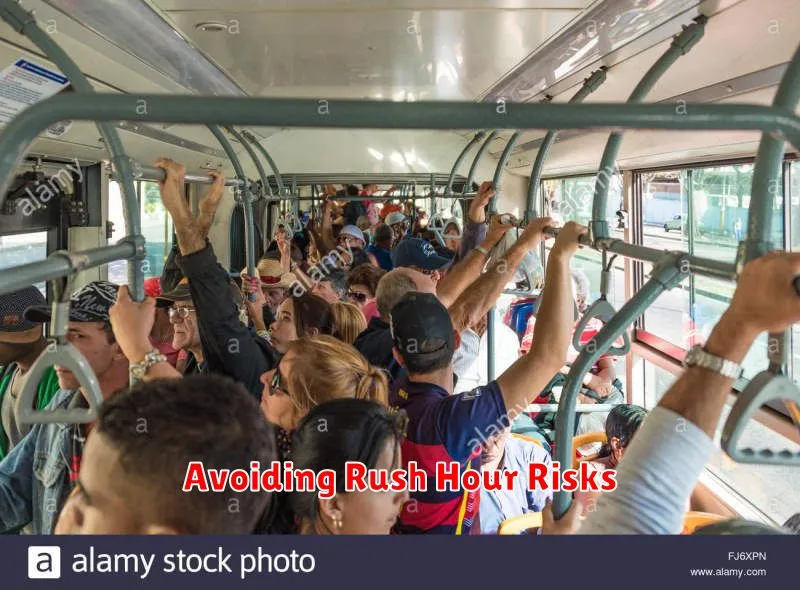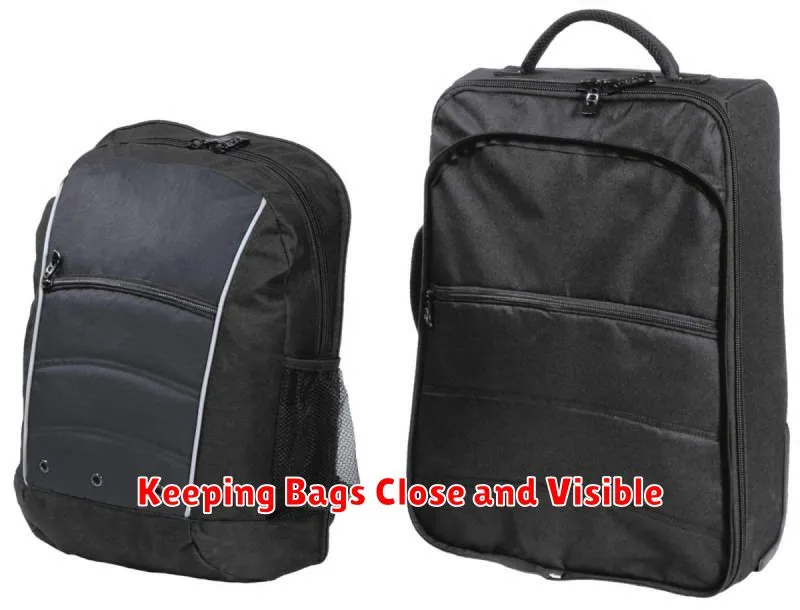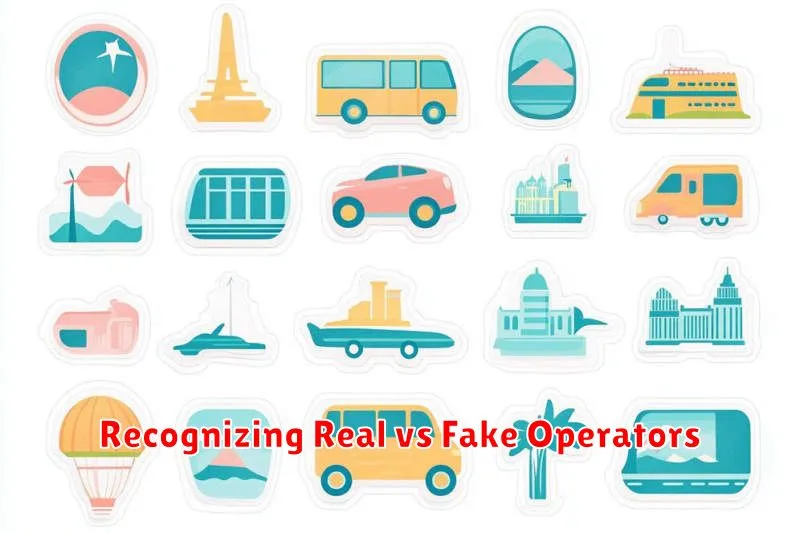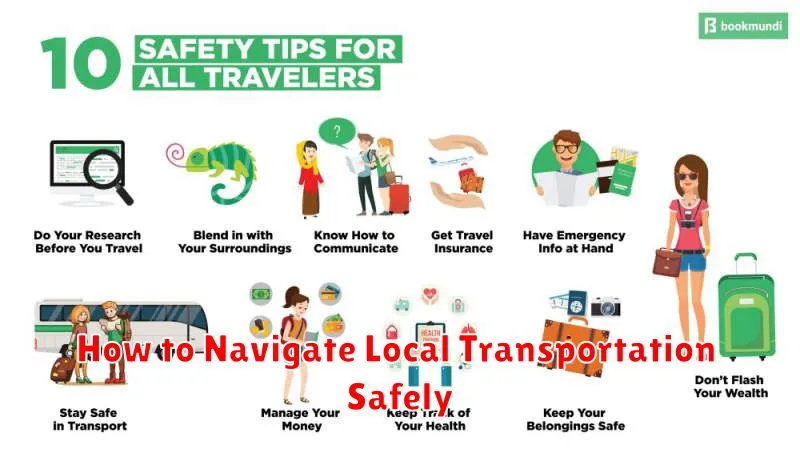Navigating local transportation safely is paramount whether you’re a seasoned traveler or a first-time visitor. Understanding the nuances of public transport, ride-sharing, and other local transportation options can significantly impact your travel experience. This article offers essential tips and insights to help you traverse new cities and familiar neighborhoods alike with confidence and security. From understanding local transportation schedules and etiquette to utilizing safe transportation apps and practices, we’ll equip you with the knowledge to stay safe and make informed decisions while using any form of local transportation.
From bustling city streets to quieter suburban areas, ensuring your safety while using local transportation is crucial. This guide will delve into practical strategies for identifying safe transportation options, protecting your belongings, and navigating unfamiliar routes. Whether you’re relying on public transport like buses and trains or opting for ride-sharing services, we’ll provide valuable advice to enhance your personal safety and promote a positive travel experience. Learn how to utilize local transportation effectively while prioritizing your well-being throughout your journey.
Understanding Local Transit Systems
Familiarizing yourself with the local transit system is the first step towards safe and efficient travel. Each city or region will have its own unique network, which may include buses, subways, trams, or light rail.
Key information to gather about each mode of transport includes routes, schedules, fares, and payment methods. This information is often available online, through mobile apps, or at transit information centers.
Understanding route maps is essential for planning your journey. Pay attention to the direction of travel, transfer points, and major landmarks along the route. Schedules provide information on the frequency of service and estimated travel times.
Fare structures can vary widely. Some systems use a flat fare, while others charge based on distance traveled or zones. Be sure to understand the payment options, whether it’s cash, a transit card, or a mobile ticketing app.
Buying Tickets from Trusted Sources
Acquiring tickets from authorized vendors is crucial for a safe and smooth transportation experience. Avoid purchasing tickets from scalpers or unofficial sources, as these tickets may be counterfeit or invalid, leading to potential travel disruptions or even denial of boarding.
Recommended sources for purchasing tickets include:
- Official ticket booths or counters at transportation hubs
- Designated vending machines within stations
- Authorized online platforms or mobile applications
By opting for legitimate channels, you ensure the validity of your ticket and contribute to a more secure transportation environment for everyone.
Avoiding Rush Hour Risks

Rush hour presents heightened risks for commuters using local transportation. Increased traffic volume leads to a greater probability of accidents. Overcrowding on buses and trains can create safety hazards, such as difficulty exiting in emergencies and increased chances of pickpocketing. Aggressive driving by other motorists, due to time constraints and traffic congestion, also poses a threat to those using public transit.
To mitigate these risks, consider adjusting your commute times. Even a slight shift of 15-30 minutes can significantly reduce your exposure to rush hour dangers. If altering your schedule is not feasible, heightened vigilance is crucial. Maintain awareness of your surroundings on platforms and inside vehicles. Secure your belongings and be prepared for sudden stops or changes in traffic flow.
Planning ahead is key. Check traffic reports before leaving and consider alternative routes or modes of transportation if necessary. Using real-time transit apps can help you identify potential delays and make informed decisions about your commute. By taking these precautions, you can significantly reduce your exposure to the heightened risks associated with rush hour travel.
Keeping Bags Close and Visible

Bag safety is a critical aspect of navigating public transportation. Keeping your bags close and visible can significantly deter theft and increase your peace of mind.
When traveling on buses or trains, place your bag on your lap or at your feet, preferably wedged between your legs. If there’s overhead storage, ensure your bag is within your line of sight. Avoid storing bags behind you or out of reach.
For backpacks, consider wearing them on your front, especially in crowded areas. This allows for greater control and visibility. When standing, hold your bag in front of you and close to your body.
Being mindful of your belongings makes you a less appealing target for opportunistic thieves.
Recognizing Real vs Fake Operators

Ensuring your safety with local transportation starts with identifying legitimate operators. Fake operators can pose serious risks, from scams to dangerous driving practices. Here are some key distinctions to help you discern between real and fake transportation providers.
Official Branding and Licensing
Real operators typically display official branding on their vehicles and at their stations/offices. Look for clear logos, permits, and license numbers. Fake operators may have makeshift or nonexistent branding.
Consistent Pricing and Payment Methods
Legitimate services will have established pricing structures. Be wary of unusually low fares or demands for upfront cash payments without receipts. Reputable operators often offer various payment options, including digital transactions.
Professional Conduct
Observe the demeanor of drivers and staff. Professional operators generally wear uniforms or identifiable attire and conduct themselves courteously. Fake operators may exhibit unprofessional behavior or pressure you into using their services.
Watching for Fare Manipulation
Protecting yourself from fare manipulation is a crucial aspect of safe transportation. Be aware of common tactics used to inflate fares, especially in unfamiliar areas or when using unregulated transportation services.
One common scam involves drivers tampering with meters. Observe the meter throughout your trip to ensure it’s running correctly and at a reasonable rate. If you suspect manipulation, politely question the driver. If they become defensive or evasive, it could be a red flag.
Another tactic is overcharging, particularly for tourists. Research typical fares for your route beforehand. Smartphone apps or local transportation websites can provide this information. Knowing the expected fare range empowers you to negotiate or refuse inflated prices.
Finally, be cautious of “special” or “fixed” fares offered without a clear explanation. These can sometimes be significantly higher than the metered rate. Insist on using the meter or confirming the fare with a reputable source before starting your journey.

